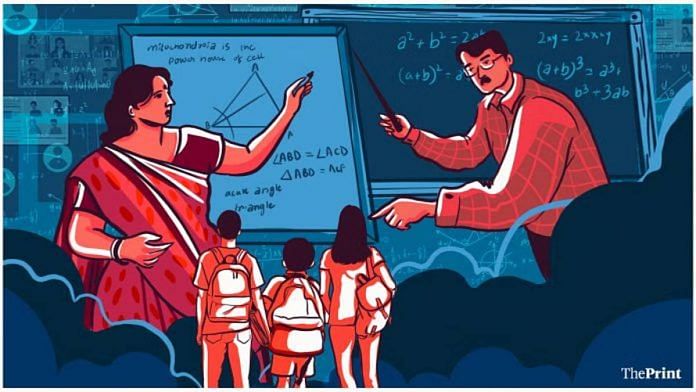New Delhi: Noting that India’s education spending is lower than that of other SAARC countries such as Bhutan and Maldives, a parliamentary panel has urged the Union education ministry to make efforts to raise education expenditure to 6 percent of GDP, as recommended in National Education Policy (NEP) 2020.
The parliamentary standing committee on education, women, children, youth and sports underlined in its ‘2025-26 Demands for Grants of the Department of Higher Education’ report that while NEP 2020 calls for a significant increase in public education investment to 6 percent of GDP by both central and state governments, it was concerning to note that total education expenditure (Centre, states and UTs) stood at only 4.12 percent of GDP in 2021-22.
“The committee also notes that SAARC countries like Bhutan and Maldives are spending 7.47 percent and 4.67 percent of their GDP, respectively, in 2022, as against 4.12 percent spending on education by India,” the committee, chaired by Congress’ Rajya Sabha MP Digvijaya Singh, said in the report tabled in Parliament Wednesday.
Emphasising that the education ministry should make sincere efforts to increase expenditure on education, the committee said: “The Ministry of Education should sincerely seek additional funds from the Ministry of Finance to make spending on education at 6 percent of GDP feasible, thereby strengthening and augmenting the public education system from school education to higher education truly world class and accessible to all sections of society.”
The committee further observed that expenditure on education as a percentage of GDP has shown inconsistency over the years.
In the years 2014-15, 2015-16 and 2016-17, the combined expenditure on education by the Centre and states as a percentage of GDP was recorded at 4.07 percent, 4.2 percent and 4.24 percent, respectively. However, this trend shifted in the following years, with the figure decreasing to 3.87 percent, 3.9 percent and 4.04 percent of GDP in 2017-18, 2018-19 and 2019-20, respectively.
It said that by 2020-21, there was a noticeable increase in education expenditure, reaching 4.36 percent of GDP, but this was followed by a decline to 4.12 percent in 2021-22.
“The committee recommends that the share as percentage of GDP spending on education should be increased and maintained consistently in expenditure on education by the central government so as to achieve the target set in NEP 2020,” the committee says in its report.
Also Read: CII report flags India’s ‘underinvestment’ in education, looks at global models—Sweden to China
Concerns over central universities operating without full-time VC
The committee, in its report, also expressed concern over the fact that as of December 2024, up to 10 central universities are being managed without regular Vice-Chancellors (VCs).
“The position of Director of the Indian Institute of Advanced Study has been vacant since August 2021. Similarly, Banaras Hindu University’s Executive Council, the highest executive body responsible for the management and administration of the institution, has been defunct since June 2021 due to the failure to appoint members nominated by the Hon’ble President in his capacity as the visitor of the university,” the committee noted.
“In the absence of these members, the Executive Council has not convened for three years, leaving key functions—including the selection of faculty members—entirely to the VC, who has been relying on his emergency powers,” it added.
Highlighting the importance of a regular, full-time VC for the proper functioning of a university, the committee emphasised that VCs play a critical role in appointing both faculty and non-faculty members, as well as overseeing the implementation of development plans.
“NEP 2020 promises that leadership positions in HEIs (higher education institutes) will not remain vacant for extended periods (as is often the case) and that outgoing and incoming Vice-Chancellors will overlap for a period,” it added.
(Edited by Nida Fatima Siddiqui)
Also Read: Indian parents trapped in a spiral of soaring private school costs. Aspiration fuels eduflation






